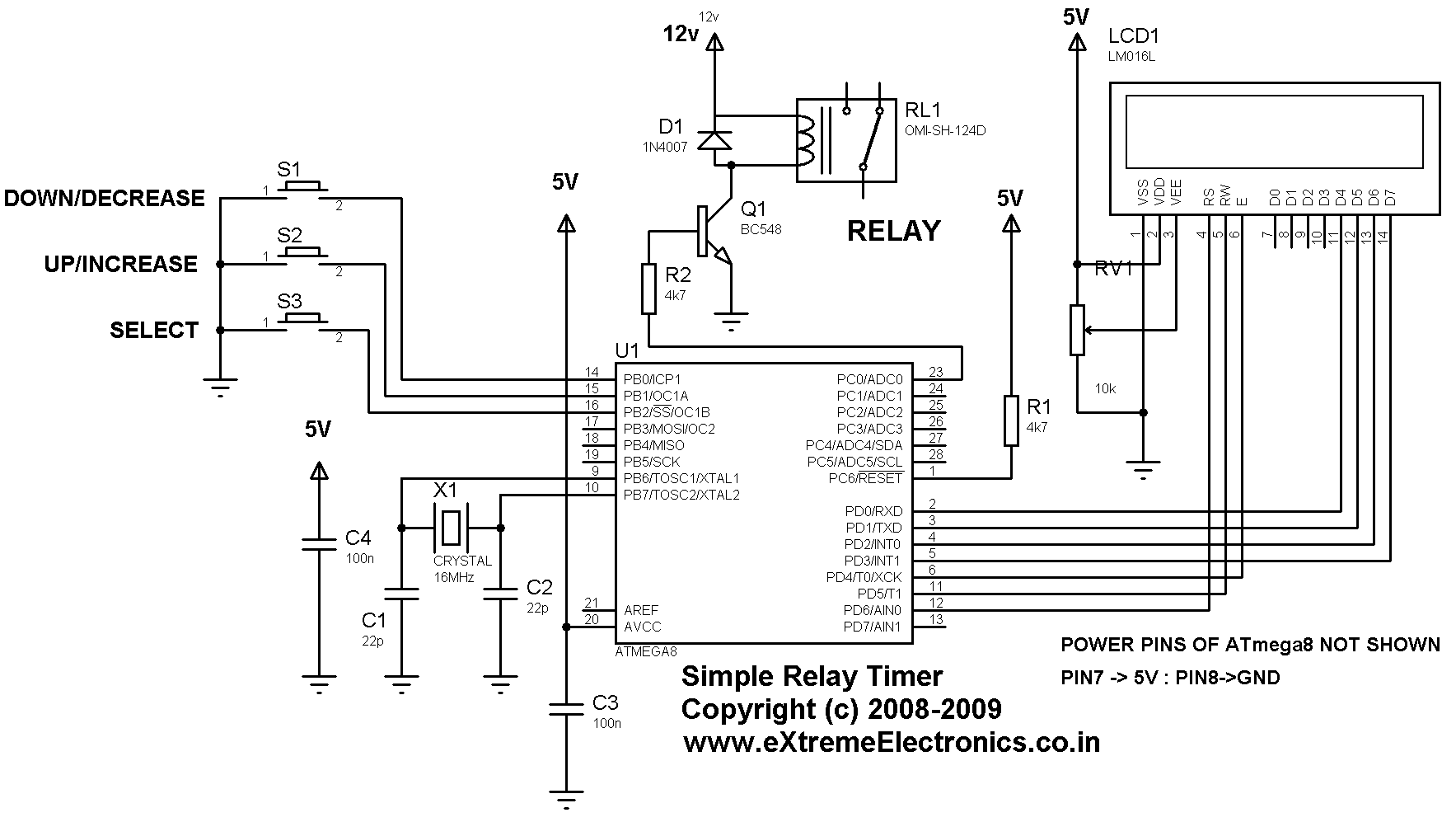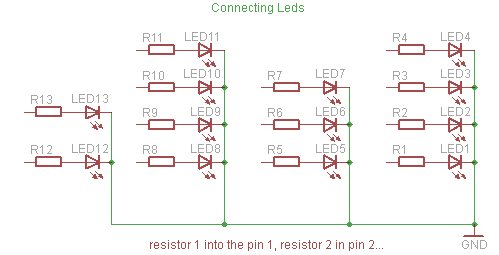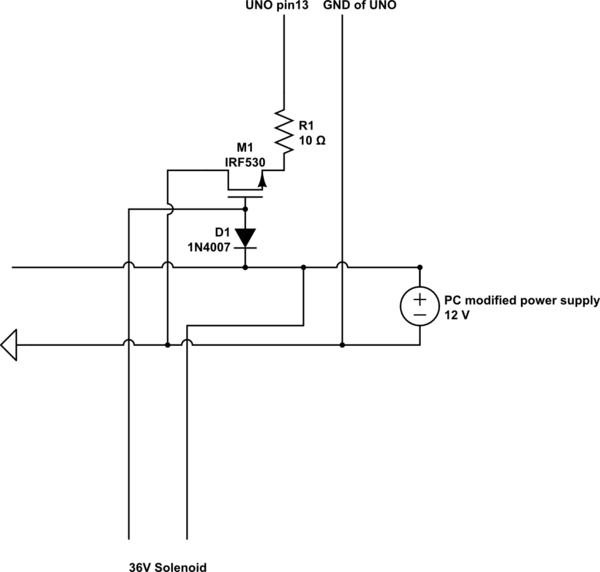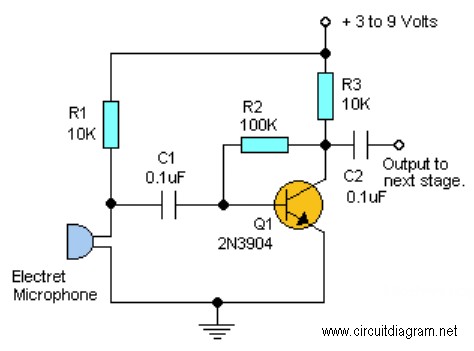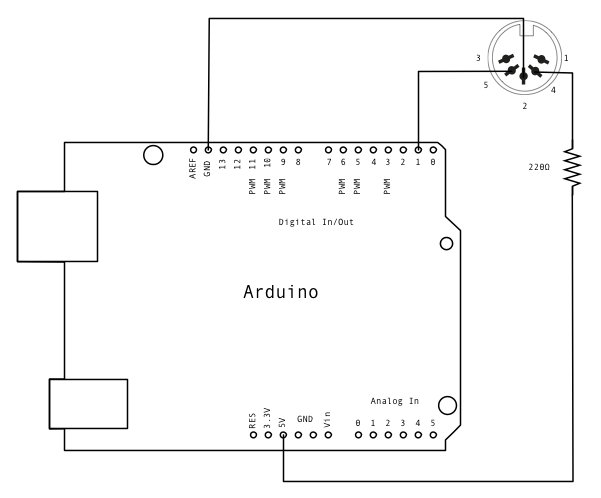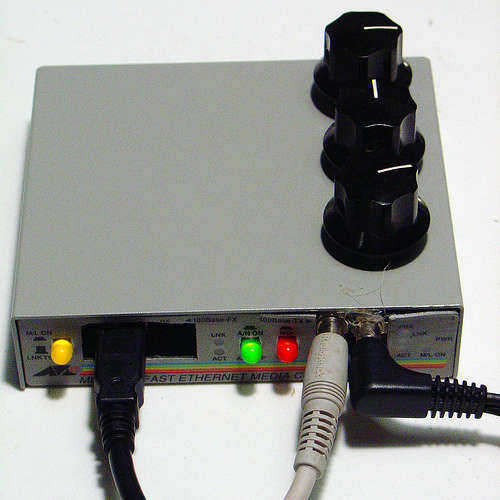
Arduino and ATMega8
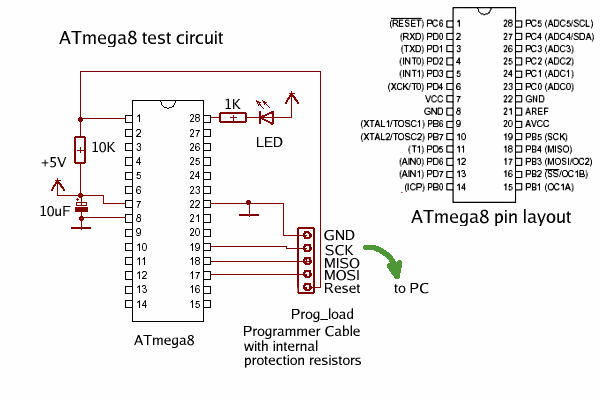
A programming jig has been constructed to eliminate the need for maintaining the circuit on a breadboard. Additional details and photographs are available on the Learning About the AVR Parallel Programmer page.
The programming jig serves as a dedicated platform for programming AVR microcontrollers, providing a stable and reliable environment that enhances the programming process. This jig typically includes a socket for the microcontroller, ensuring proper alignment and secure connections, which reduces the risk of errors that may occur when using a breadboard.
Key components of the programming jig may include a power supply circuit to deliver the appropriate voltage levels required by the microcontroller, as well as interface connections for programming signals. The design should incorporate decoupling capacitors near the power pins of the microcontroller to filter out any noise that could interfere with programming.
Additionally, the jig may feature indicator LEDs to provide visual feedback on the programming status, such as power on, programming in progress, and completion. The layout should be optimized for minimal interference and ease of access to programming pins, facilitating quick and efficient programming cycles.
For enhanced functionality, the jig can be designed to accommodate multiple microcontroller types by using interchangeable sockets or adapters. This versatility makes it a valuable tool for developers working with various AVR models.
Overall, the programming jig represents an important advancement in the development process, streamlining programming tasks and improving the reliability of circuit testing and development.I have since constructed a programming "jig" to avoid keeping the circuit on the breadboard. More detail, and photographs can be found on the Learning About the AVR Parallel Programmer page. 🔗 External reference
The programming jig serves as a dedicated platform for programming AVR microcontrollers, providing a stable and reliable environment that enhances the programming process. This jig typically includes a socket for the microcontroller, ensuring proper alignment and secure connections, which reduces the risk of errors that may occur when using a breadboard.
Key components of the programming jig may include a power supply circuit to deliver the appropriate voltage levels required by the microcontroller, as well as interface connections for programming signals. The design should incorporate decoupling capacitors near the power pins of the microcontroller to filter out any noise that could interfere with programming.
Additionally, the jig may feature indicator LEDs to provide visual feedback on the programming status, such as power on, programming in progress, and completion. The layout should be optimized for minimal interference and ease of access to programming pins, facilitating quick and efficient programming cycles.
For enhanced functionality, the jig can be designed to accommodate multiple microcontroller types by using interchangeable sockets or adapters. This versatility makes it a valuable tool for developers working with various AVR models.
Overall, the programming jig represents an important advancement in the development process, streamlining programming tasks and improving the reliability of circuit testing and development.I have since constructed a programming "jig" to avoid keeping the circuit on the breadboard. More detail, and photographs can be found on the Learning About the AVR Parallel Programmer page. 🔗 External reference
